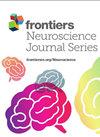Insomnia-related brain functional correlates in first-episode drug-naïve major depressive disorder revealed by resting-state fMRI
IF 3.2
3区 医学
Q2 NEUROSCIENCES
引用次数: 0
Abstract
IntroductionInsomnia is a common comorbidity symptom in major depressive disorder (MDD) patients. Abnormal brain activities have been observed in both MDD and insomnia patients, however, the central pathological mechanisms underlying the co-occurrence of insomnia in MDD patients are still unclear. This study aimed to explore the differences of spontaneous brain activity between MDD patients with and without insomnia, as well as patients with different level of insomnia.MethodsA total of 88 first-episode drug-naïve MDD patients including 44 with insomnia (22 with high insomnia and 22 with low insomnia) and 44 without insomnia, as well as 44 healthy controls (HC), were enrolled in this study. The level of depression and insomnia were evaluated by HAMD-17, adjusted HAMD-17 and its sleep disturbance subscale in all subjects. Resting-state functional and structural magnetic resonance imaging data were acquired from all participants and then were preprocessed by the software of DPASF. Regional homogeneity (ReHo) values of brain regions were calculated by the software of REST and were compared. Finally, receiver operating characteristic (ROC) curves were conducted to determine the values of abnormal brain regions for identifying MDD patients with insomnia and evaluating the severity of insomnia.ResultsAnalysis of variance showed that there were significant differences in ReHo values in the left middle frontal gyrus, left pallidum, right superior frontal gyrus, right medial superior frontal gyrus and right rectus gyrus among three groups. Compared with HC, MDD patients with insomnia showed increased ReHo values in the medial superior frontal gyrus, middle frontal gyrus, triangular inferior frontal gyrus, calcarine fissure and right medial superior frontal gyrus, medial orbital superior frontal gyrus, as well as decreased ReHo values in the left middle occipital gyrus, pallidum and right superior temporal gyrus, inferior temporal gyrus, middle cingulate gyrus, hippocampus, putamen. MDD patients without insomnia demonstrated increased ReHo values in the left middle frontal gyrus, orbital middle frontal gyrus, anterior cingulate gyrus and right triangular inferior frontal gyrus, as well as decreased ReHo values in the left rectus gyrus, postcentral gyrus and right rectus gyrus, fusiform gyrus, pallidum. In addition, MDD patients with insomnia had decreased ReHo values in the left insula when compared to those without insomnia. Moreover, MDD patients with high insomnia exhibited increased ReHo values in the right middle temporal gyrus, and decreased ReHo values in the left orbital superior frontal gyrus, lingual gyrus, right inferior parietal gyrus and postcentral gyrus compared to those with low insomnia. ROC analysis demonstrated that impaired brain region might be helpful for identifying MDD patients with insomnia and evaluating the severity of insomnia.ConclusionThese findings suggested that MDD patients with insomnia had wider abnormalities of brain activities in the prefrontal-limbic circuits including increased activities in the prefrontal cortex, which might be the compensatory mechanism underlying insomnia in MDD. In addition, decreased activity of left insula might be associated with the occurrence of insomnia in MDD patients and decreased activities of the frontal–parietal network might cause more serious insomnia related to MDD.静息态核磁共振成像揭示初发未服药重度抑郁症患者失眠相关的大脑功能相关性
导言失眠是重度抑郁症(MDD)患者常见的合并症状。然而,MDD 患者同时伴有失眠的核心病理机制仍不清楚。本研究旨在探讨有失眠症和无失眠症的 MDD 患者以及不同失眠程度的患者的自发脑活动的差异。所有受试者的抑郁和失眠程度均通过 HAMD-17、调整后的 HAMD-17 及其睡眠障碍分量表进行评估。研究人员采集了所有受试者的静息态功能和结构磁共振成像数据,并通过 DPASF 软件进行了预处理。用 REST 软件计算脑区的区域同质性(ReHo)值,并进行比较。结果方差分析显示,三组患者的左侧额叶中回、左侧苍白球、右侧额叶上回、右侧额叶内上回和右侧直回的ReHo值存在显著差异。与失眠症患者相比,失眠症患者的额上回内侧、额中回、三角额下回、钙化裂和右额上回内侧的ReHo值均有所增加、同时,左枕叶中回、苍白球和右颞上回、颞下回、扣带回中段、海马和普坦的 ReHo 值降低。没有失眠的 MDD 患者左侧额中回、眶中额回、扣带回前部和右侧三角额下回的 ReHo 值升高,而左侧直回、中央后回和右侧直回、纺锤形回、苍白球的 ReHo 值降低。此外,与无失眠症患者相比,失眠症患者左侧脑岛的 ReHo 值降低。此外,与失眠程度低的患者相比,失眠程度高的 MDD 患者右侧颞中回的 ReHo 值升高,左侧眶上额回、舌回、右侧顶叶下回和中央后回的 ReHo 值降低。ROC分析表明,受损脑区可能有助于鉴别失眠症患者和评估失眠症的严重程度。 结论:这些研究结果表明,失眠症患者前额叶-边缘环路的脑活动存在更广泛的异常,包括前额叶皮层活动增加,这可能是失眠症患者失眠的代偿机制。此外,左侧岛叶活动的减少可能与 MDD 患者失眠的发生有关,而额叶-顶叶网络活动的减少可能会导致与 MDD 有关的更严重的失眠。
本文章由计算机程序翻译,如有差异,请以英文原文为准。
求助全文
约1分钟内获得全文
求助全文
来源期刊

Frontiers in Neuroscience
NEUROSCIENCES-
CiteScore
6.20
自引率
4.70%
发文量
2070
审稿时长
14 weeks
期刊介绍:
Neural Technology is devoted to the convergence between neurobiology and quantum-, nano- and micro-sciences. In our vision, this interdisciplinary approach should go beyond the technological development of sophisticated methods and should contribute in generating a genuine change in our discipline.
 求助内容:
求助内容: 应助结果提醒方式:
应助结果提醒方式:


